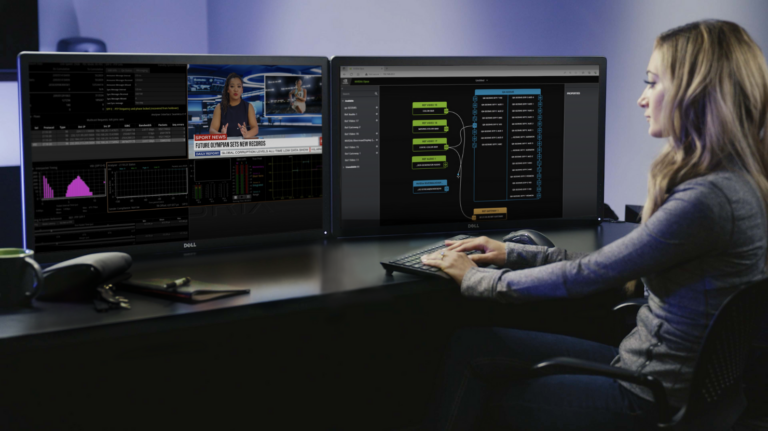
A person’s prior experience and understanding of the world generally enables them to easily infer what an object looks like in whole, even if only looking at a few 2D pictures of it. Yet the capacity for a computer to reconstruct the shape of an object in 3D given only a few images has remained a difficult algorithmic problem for years. This fundamental computer vision task has applications ranging from the creation of e-commerce 3D models to autonomous vehicle navigation.
A key part of the problem is how to determine the exact positions from which images were taken, known as pose inference. If camera poses are known, a range of successful techniques — such as neural radiance fields (NeRF) or 3D Gaussian Splatting — can reconstruct an object in 3D. But if these poses are not available, then we face a difficult “chicken and egg” problem where we could determine the poses if we knew the 3D object, but we can’t reconstruct the 3D object until we know the camera poses. The problem is made harder by pseudo-symmetries — i.e., many objects look similar when viewed from different angles. For example, square objects like a chair tend to look similar every 90° rotation. Pseudo-symmetries of an object can be revealed by rendering it on a turntable from various angles and plotting its photometric self-similarity map.
 |
| Self-Similarity map of a toy truck model. Left: The model is rendered on a turntable from various azimuthal angles, θ. Right: The average L2 RGB similarity of a rendering from θ with that of θ*. The pseudo-similarities are indicated by the dashed red lines. |
The diagram above only visualizes one dimension of rotation. It becomes even more complex (and difficult to visualize) when introducing more degrees of freedom. Pseudo-symmetries make the problem ill-posed, with naïve approaches often converging to local minima. In practice, such an approach might mistake the back view as the front view of an object, because they share a similar silhouette. Previous techniques (such as BARF or SAMURAI) side-step this problem by relying on an initial pose estimate that starts close to the global minima. But how can we approach this if those aren’t available?
Methods, such as GNeRF and VMRF leverage generative adversarial networks (GANs) to overcome the problem. These techniques have the ability to artificially “amplify” a limited number of training views, aiding reconstruction. GAN techniques, however, often have complex, sometimes unstable, training processes, making robust and reliable convergence difficult to achieve in practice. A range of other successful methods, such as SparsePose or RUST, can infer poses from a limited number views, but require pre-training on a large dataset of posed images, which aren’t always available, and can suffer from “domain-gap” issues when inferring poses for different types of images.
In “MELON: NeRF with Unposed Images in SO(3)”, spotlighted at 3DV 2024, we present a technique that can determine object-centric camera poses entirely from scratch while reconstructing the object in 3D. MELON (Modulo Equivalent Latent Optimization of NeRF) is one of the first techniques that can do this without initial pose camera estimates, complex training schemes or pre-training on labeled data. MELON is a relatively simple technique that can easily be integrated into existing NeRF methods. We demonstrate that MELON can reconstruct a NeRF from unposed images with state-of-the-art accuracy while requiring as few as 4–6 images of an object.
MELON
We leverage two key techniques to aid convergence of this ill-posed problem. The first is a very lightweight, dynamically trained convolutional neural network (CNN) encoder that regresses camera poses from training images. We pass a downscaled training image to a four layer CNN that infers the camera pose. This CNN is initialized from noise and requires no pre-training. Its capacity is so small that it forces similar looking images to similar poses, providing an implicit regularization greatly aiding convergence.
The second technique is a modulo loss that simultaneously considers pseudo symmetries of an object. We render the object from a fixed set of viewpoints for each training image, backpropagating the loss only through the view that best fits the training image. This effectively considers the plausibility of multiple views for each image. In practice, we find N=2 views (viewing an object from the other side) is all that’s required in most cases, but sometimes get better results with N=4 for square objects.
These two techniques are integrated into standard NeRF training, except that instead of fixed camera poses, poses are inferred by the CNN and duplicated by the modulo loss. Photometric gradients back-propagate through the best-fitting cameras into the CNN. We observe that cameras generally converge quickly to globally optimal poses (see animation below). After training of the neural field, MELON can synthesize novel views using standard NeRF rendering methods.
We simplify the problem by using the NeRF-Synthetic dataset, a popular benchmark for NeRF research and common in the pose-inference literature. This synthetic dataset has cameras at precisely fixed distances and a consistent “up” orientation, requiring us to infer only the polar coordinates of the camera. This is the same as an object at the center of a globe with a camera always pointing at it, moving along the surface. We then only need the latitude and longitude (2 degrees of freedom) to specify the camera pose.
Results
We compute two key metrics to evaluate MELON’s performance on the NeRF Synthetic dataset. The error in orientation between the ground truth and inferred poses can be quantified as a single angular error that we average across all training images, the pose error. We then test the accuracy of MELON’s rendered objects from novel views by measuring the peak signal-to-noise ratio (PSNR) against held out test views. We see that MELON quickly converges to the approximate poses of most cameras within the first 1,000 steps of training, and achieves a competitive PSNR of 27.5 dB after 50k steps.
 |
| Convergence of MELON on a toy truck model during optimization. Left: Rendering of the NeRF. Right: Polar plot of predicted (blue x), and ground truth (red dot) cameras. |
MELON achieves similar results for other scenes in the NeRF Synthetic dataset.
 |
| Reconstruction quality comparison between ground-truth (GT) and MELON on NeRF-Synthetic scenes after 100k training steps. |
Noisy images
MELON also works well when performing novel view synthesis from extremely noisy, unposed images. We add varying amounts, σ, of white Gaussian noise to the training images. For example, the object in σ=1.0 below is impossible to make out, yet MELON can determine the pose and generate novel views of the object.
 |
| Novel view synthesis from noisy unposed 128×128 images. Top: Example of noise level present in training views. Bottom: Reconstructed model from noisy training views and mean angular pose error. |
This perhaps shouldn’t be too surprising, given that techniques like RawNeRF have demonstrated NeRF’s excellent de-noising capabilities with known camera poses. The fact that MELON works for noisy images of unknown camera poses so robustly was unexpected.
Conclusion
We present MELON, a technique that can determine object-centric camera poses to reconstruct objects in 3D without the need for approximate pose initializations, complex GAN training schemes or pre-training on labeled data. MELON is a relatively simple technique that can easily be integrated into existing NeRF methods. Though we only demonstrated MELON on synthetic images we are adapting our technique to work in real world conditions. See the paper and MELON site to learn more.
Acknowledgements
We would like to thank our paper co-authors Axel Levy, Matan Sela, and Gordon Wetzstein, as well as Florian Schroff and Hartwig Adam for continuous help in building this technology. We also thank Matthew Brown, Ricardo Martin-Brualla and Frederic Poitevin for their helpful feedback on the paper draft. We also acknowledge the use of the computational resources at the SLAC Shared Scientific Data Facility (SDF).

















.jpg)














 The broadcast industry is undergoing a transformation in how content is created, managed, distributed, and consumed. This transformation includes a shift from…
The broadcast industry is undergoing a transformation in how content is created, managed, distributed, and consumed. This transformation includes a shift from…
 Streamline and accelerate deployment by integrating ETL and ML training into a single Apache Spark script on Amazon EMR.
Streamline and accelerate deployment by integrating ETL and ML training into a single Apache Spark script on Amazon EMR.